Lyubka is two-leaved
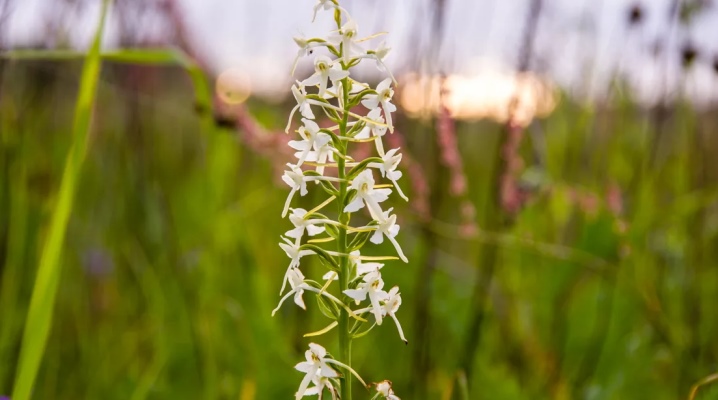
Forest Orchid is a plant with beautiful white flowers that exude a wonderful, deep and unforgettable aroma. It is famous not only for its excellent decorative properties, but also for its rich therapeutic spectrum of actions. Such a harmonious combination of beauty and usefulness tempts many gardeners to grow orchids in their garden plots. Breeding a plant is not an easy process, but it is quite possible and, of course, worth it.
general description
Lyubka double-leaved, or night violet (in Latin Platanthéra bifólia), is a wild, but highly decorative plant of the orchid family, growing up to 20-50 cm. The sizes of flowers directly depend on the quality of the soil, as well as the specifics of the climatic conditions in the places of their growth. The violet forms two complex tubers, united into one, which are renewed annually. Two or three basal leaves of light green tones grow oppositely. At the base, they taper and smoothly turn into petioles. Lanceolate and narrow leaves grow up to 10–22 cm in length and 3–6 cm in width. The flower is included in the Red Book with the assignment of the first category to it as an endangered species. This is especially true for the violet near Moscow.
It is often called a wild orchid or wild balsam (hinting at its medicinal properties), because most often it grows in wooded areas of Europe. In the Russian Federation, it is found in the European and Siberian expanses, as well as in Altai, the foothills of the Caucasus and in the Sayan Mountains.
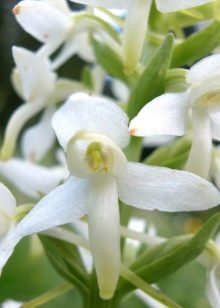

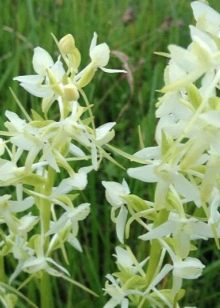
The forest orchid begins to bloom in early June and continues in July. Inflorescences in their structure resemble a spike of a cylindrical configuration. Petals are white, with a greenish color at the ends of the perianths. Lips are narrow, lanceolate, slightly more than 10 mm in length. The anthers are obovate.
Orchid flowers have a wonderful and strong aroma, which is especially intense in the evenings, as well as in cloudy and cool weather. It is for this reason that the flower is called nocturnal. Orchid fruits, producing up to 20,000 seeds in one box, are formed in August - September. Their characteristic feature is that they ripen, being located only next to mushroom spores.
The plant blooms for a 5-6-year period. However, with abundant flowering, there may be breaks lasting up to 2 years, when the flowers do not develop at all. This is important to consider when growing orchids in your garden area, as well as when it becomes necessary to transplant bushes, since they take a long time to take root. The life span of the plant is quite long - up to 20–25 years.
Orchid roots have medicinal properties. They begin to harvest them at the end of the flowering process and further to the last days of July. After collecting, the roots are cleaned, washed and dried in shaded areas or dryers, after which they are crushed and infused or brewed.

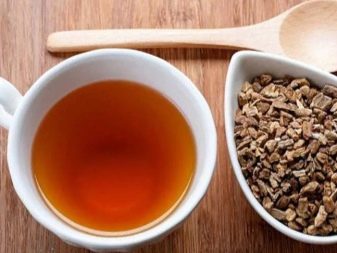
The roots include many health-improving elements and useful complexes:
- unique mucus, consisting of polysaccharides;
- starch;
- useful herbal formulations;
- protein complexes;
- minerals and ester compounds;
- calcium compounds, etc.
These ingredients are beneficial for many human organs, have a number of positive effects on them:
- antitoxic;
- anti-inflammatory;
- tonic;
- hypotensive;
- antiseptic;
- diuretic and emollient.

Polysaccharides perform a protective function of the mucous pathways of the digestive tract, prevent the occurrence of ulcerative symptoms, blocking the development of inflammation processes.
Violets have long and well established themselves in the field of traditional medicine. They are used as the main or auxiliary medicine in the treatment of a number of diseases:
- inflammation of the respiratory tract;
- cancer;
- intoxications of food and medicinal origin;
- inflamed wounds;
- anemia;
- abscesses;
- toothaches;
- cystitis.
In practice, many different orchid recipes are used.


Landing
Growing wild balsam by seed method is not an easy process, since they germinate for a long time., often sprout after 3 or more years, "ripening" in the soil. You can plant seeds in a pot, but the flowering process, despite the well-organized agro-care process, begins 6-8 years after the sprouts appear. In this case, mushroom spores should be located nearby in the soil.
Nevertheless seeds can be tried to be planted in open soil or for seedlings. Planting dates fall at the end of April, and if grown at home, then crops are carried out at the beginning of March. At the same time, it is the forest soil that should be taken for planting, which should not be disinfected, since only it contains mushroom spores that play a vital role for the development of seeds.
For the successful cultivation of violets, it is important to create special conditions on the site. Only then will the orchid grow productively, and the flowering process will be attractive and long. Main rules:
- the soil should be well loosened, aerated and nutritious, despite the fact that the flower also develops on depleted soils;
- a shaded place is chosen, for example, in the shade of other plants;
- there is no stagnation of water (should not be placed in the lowlands).
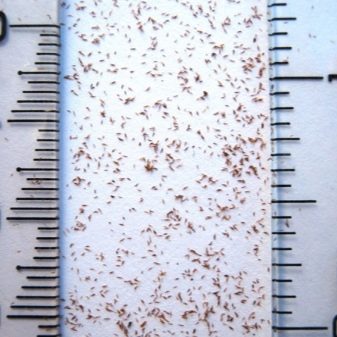

Seeds are planted at a shallow depth (1–2 cm), having previously made special planting grooves in the soil (a distance of 5 cm between them). A similar planting scheme is used when growing orchids at home using seedlings. Following the planting, the soil is moistened with a sprayer. It is not worth covering the plantings with film and organizing other conditions for the bushes - the seedlings will not appear soon.
The transplant is carried out in the 3rd year of the growth of the bushes. The best time for this is the second decade of May, when return frosts are not expected to be confidently expected. The grasses are not yet very spreading, and therefore it is better to maintain the distance between the planting recesses at 20-30 cm.
Practiced by gardeners and transplanting grown orchids from nurseries to the garden. Here the sequence of actions is somewhat different:
- we carry out preliminary preparation of the site, adding humus or compost to the soil in advance;
- we irrigate seedlings;
- we carry out marking of small indentations for disembarkation;
- carefully remove the bushes from the containers, completely preserving the earthen lumps on the roots;
- we put them in the recesses, adding a little nutritious soil, moderately irrigate the bushes.
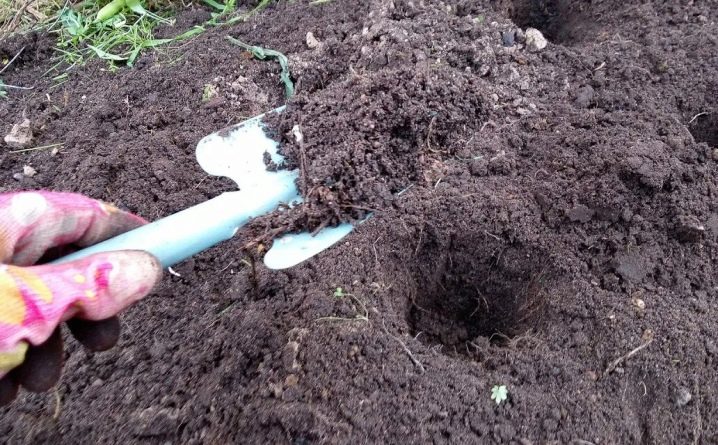
Care
Violets are rarely grown in pots, since at home they develop extremely unproductively for a number of reasons:
- require open areas with a stable supply of fresh air;
- they are demanding to observe a clear seasonality with a transition between summer and winter;
- a special composition of the soil is needed so that there are mushroom spores in it, which is especially important during the period of growing seeds.
To get a healthy plant worthy of its magical name, with beautiful flowers and an intoxicating aroma, you should take care of it when growing, adhere to a number of rules.
- During a rainy summer, additional irrigation can be omitted, but in a hot season it must be moistened daily.
- Periodically loosen the soil and do weeding.
- With fertile soil, top dressing is not worth it.If the soils are poor, then in the spring and during the budding period, complex mineral fertilizers should be added.
- The rest of the care measures are simple - no pruning or transplanting is required. But in late autumn, it is advisable to mulch the near-root area of flowers with sawdust, hay, needles or dry foliage.

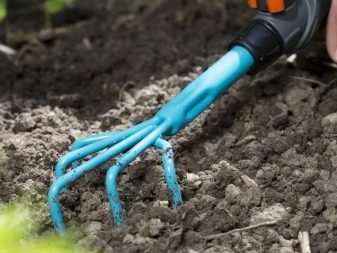
The orchid is famous for its unpretentiousness, and therefore does not need special care and does not suffer from any diseases either. Fungal lesions are likely only with excessive watering. In these cases, the treatment is carried out with "Fundazol", Bordeaux composition or other fungicides.
When attacked by harmful insects, and the most probable here are the invasions of aphids, 1-2 spraying with insecticides is carried out ("Decis", "Karate", "Aktara", "Fufanon", "Fitoverm", etc.)
Due to their excellent decorative properties, violets are grown as a decoration for greenhouses, as well as simply in open soils. They are not only actively used in single plantings (on monoclumba), but also mixed with other colors.
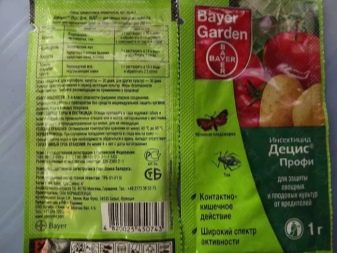
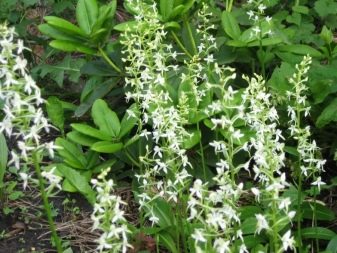
Orchids are harmoniously combined with hosts who also love shaded areas and are equally unpretentious. They look good in various combinations in accordance with the ideas of the designers. The hosts are smaller, so they are usually placed in front, and taller orchids are placed in the background, creating an unusual backdrop.
Reproduction
The orchid reproduces with the help of seeds. The flower is extremely prolific; a significant amount of grains is obtained. You can collect them yourself or buy them in stores.
The second option for reproduction is with the help of root tubers, but this is a more complicated way, since these tubers are of a replacement type. In other words, only one tuber is formed annually - if it does not take root, then a new one will have to be expected next year.
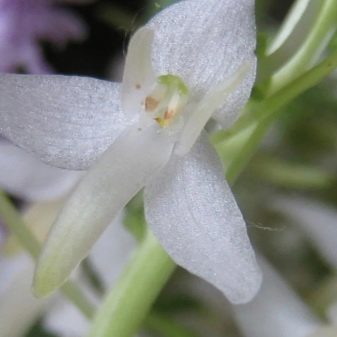
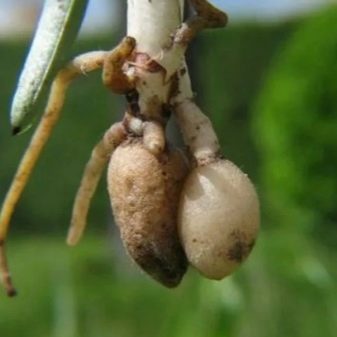













The comment was sent successfully.